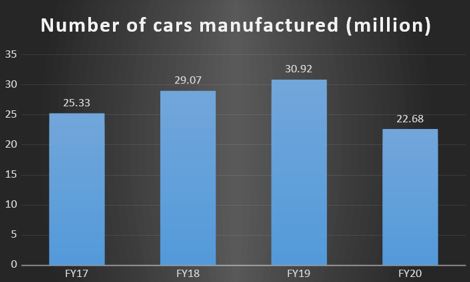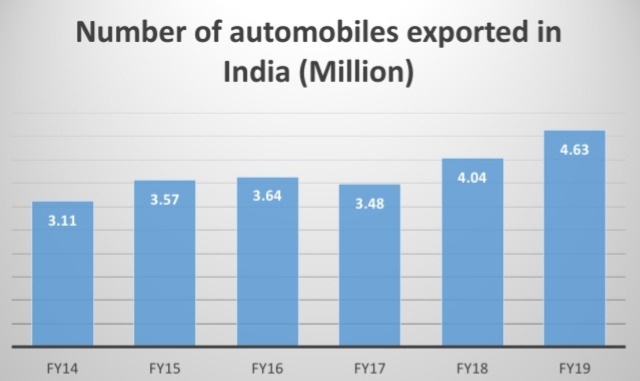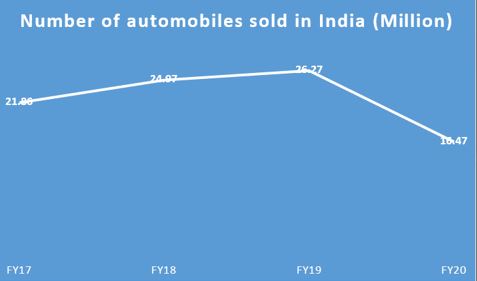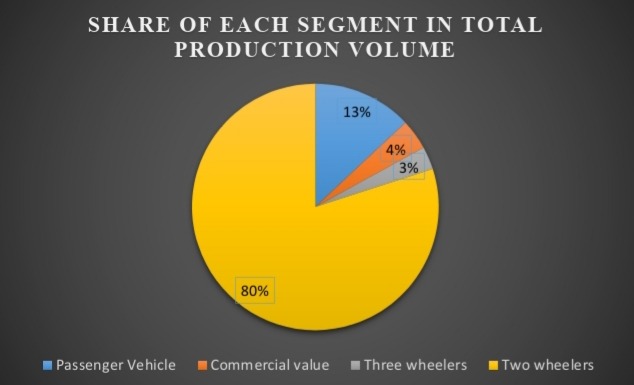India is the fourth largest market of automotive in the world. According to the Ministry of commerce’s statistical report, India was the fourth-largest producer of cars and seventh in terms of producing commercial vehicles in 2019 . Indian automobile sector shows an eye-catching growth rate of profitability and this sector is expected to reach US$ 251.4-282.8 billion by 2026. In the last 19 years, the automobile sector has received foreign direct investment (FDI) worth US$ 23.89 billion. Five percent of total FDI inflow in India has been allocated to the automobile sector.
Production of domestic automobiles had increased at 2.36% compound annual growth rate (CAGR) between FY16-FY20 and around 26.36 million vehicles have been manufactured in the country in FY20. The country reported 1.29 percent CAGR in the sales of domestic automobiles between FY16-FY20 with 21.55 million vehicles being sold in FY20.

The Indian automobile market is dominated by Two-wheelers and passenger vehicles because of having large middle class people population. Two-wheelers and passenger cars accounted for 80.8 percent and 12.9 percent market share, respectively, accounting for a combined sale of over 20.1 million vehicles in FY20.

In FY20 4.77 million Indian manufactured vehicles were exported across the world, growing at a CAGR of 6.94 percent during FY16-FY20. Two-wheelers secured 73.9 percent of the vehicles exported, followed by passenger vehicles at 14.2 percent, three-wheelers at 10.5 percent, and commercial vehicles at 1.3 percent.
The government plans to develop India as a global manufacturing and research and development (R&D) hub. The government has set up National Automotive Testing and R&D Infrastructure Project (NATRiP) centers as well as National Automotive Board to act as a facilitator between the government and the industry. Under (NATRiP), the government has also established five testing and research centers in the country since 2015.

The Indian government has planning to start the sale of EVs to reduce the current consumption of petrol and pollution in the country. The government has prepared a list of 11 cities where the EVs will be launched first as public transport system under the (Faster Adoption and Manufacturing of Electric Vehicles FAME scheme. The first phase of the scheme was extended to March 2019 while in February 2019, the government approved the FAME-II scheme with a fund requirement of US$ 1.39 billion for FY20-22. Under Union Budget 2019-20, the government announced to provide an additional income tax deduction of US$ 2146 on the interest paid on the loans taken to purchase EVs.

Electric Vehicle Sales, excluding e-rickshaws, in India reported a growth of 20 percent and achieved 156000 units in FY20 driven by two-wheelers.
The government is making fresh policies to support electric vehicles, which will be released on a smaller scale to ensure a smoother transition and better cooperation from the automobile sector, a government official said.
The policy, advocating minimal subsidies, is likely to be announced at a global e-mobility summit to be inaugurated by Prime Minister Narendra Modi on September 7 of 2020 . The government of India expects the automobile sector to attract US$ 8-10 billion in local and foreign investment by 2023.










